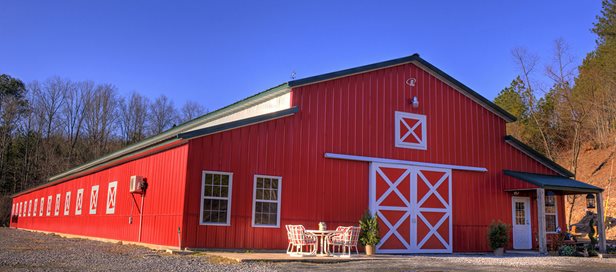Just like humans, horses need fresh, clean air to breathe. Yet inadequate ventilation is the most common mistake made in construction and management of modern horse stables.
That’s according to Eileen Fabian Wheeler, Ph.D., a professor of agricultural and biological engineering at Penn State. Although it’s been a decade since first published, her article, “Horse Stable Ventilation”* is still relevant today. Many barn builders, including Lester Buildings, practice her basic principles. Al Miller, a Lester sales manager and horse owner, is a fan.
“Most horses are standing 15 hours a day in a stall. If your barn isn’t providing enough fresh air and you’re not removing heat in summer and moisture in winter, your horses are much more susceptible to health problems,” he explains. Al has helped numerous Lester clients build horse barns, from simple stables to elaborate riding arenas.
Ventilation Factors to Consider
First, hire a designer/builder who knows barn ventilation basics, which are different than residential or commercial needs. Per Dr. Wheeler, ventilation should:
Other considerations will include the building site and landscaping (for example, drainage), size and design of building, number of horses, and weather. In Al’s experience, with the right design, it’s possible to vent naturally, rather than mechanically.

“Lester uses a vented ridge cap and overhang system that suits most barns really well. I’ll also often suggest dutch doors and a grilled stall bottom to help move air around horses’ feet.” He adds that a very large horse complex — or an owner who prefers a completely insulated barn — will probably need power ventilation. He cautions to not lose sight of what’s best for the horse or horses. “Some people put their own comfort above what a horse needs. But they’re two very different things.”
The Goal
Aim for a comfortably (by horse standards) dry stable with no condensation. And hire a builder who is committed to preventing a stuffy stable with good ventilation. To learn more about Lester Buildings and see a library of equestrian buildings in your area, visit lesterbuildings.com.
